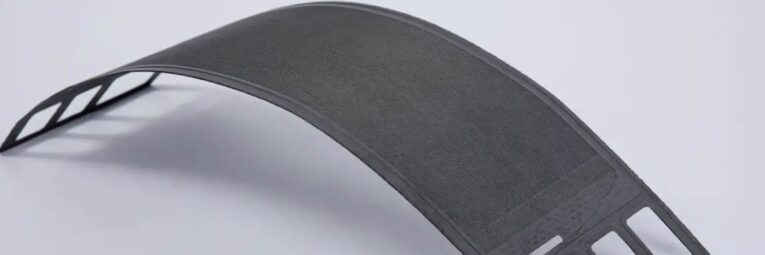
- Home
- All Posts
- Battery Material
- Bipolar Plate
- Application of Flexible Graphite Bipolar Plate
Blog

Application of Flexible Graphite Bipolar Plate
Flexible graphite bipolar plates are a branch of graphite electrode plate family, which use expanded graphite material as basic material to carry out modification treatment. Through high-temperature expansion and oxidation, the original graphite structure is remained and increase the spacing between graphite layers. The compressed composite graphite bipolar plates are soft and elastic, with good conductivity and thermal conductivity, gas barrier, corrosion resistance and high-temperature resistance. They take into account the advantages of both metal and graphite plates, and have been under mass production and widely used in various fuel cells and flow batteries.
Preparation method of flexible graphite bipolar plates
Expanded graphite uses natural flake graphite as raw material, choose appropriate sized graphite particles and remove excess minerals through purification treatment. Subsequently, acidic intercalation agent such as sulfuric acid or nitric acid are added for sufficient oxidation reaction to produce compounds between graphite layers to achieve expansion effect. impurities can be removed through processes including deacidification, washing and drying, and add antioxidants to prevent graphite from being oxidized under high-temperature conditions. High temperature expansion is generally carried out at around 1000 ℃, it’s necessary to control the process parameters such as temperature, humidity and time to ensure that compounds inside interlayer are completely decomposed at high temperatures while the graphite particles are not oxidized. The force generated by decomposition of compounds enlarges the interlayer distance, finally form a loose and flexible expanded graphite structure.
During the rolling process, worm shaped graphite strips are compressed into flexible sheets with lower density, porous and fluffy internal structures. In order to prevent gas accumulation inside, the compression of flexible graphite plates is generally carried out under vacuum conditions. Polymer resin can be injected to compensate for the shortcomings of airtightness and mechanical properties, high-density flexible graphite plates with flow channels can be formed by compression. The ratio of graphite and resin can be confirmed through reiterative experiment, and the optimal ratio formula can balance conductivity and strength. The pressed unipolar graphite plate undergoes quality inspection screening and sent to the next infiltration process. Infiltration and adhesive injection can improve sealing and mechanical properties of electrode plate. The impregnation solution is generally prepared with resin solution. After continuous process of loading, vacuum pressure infiltration and unloading, the formed bipolar graphite plates requires further cleaning, oven drying and curing treatment. The following production processes include flattening, gluing, bipolar plate bonding, sealing and trimming, ultimately obtaining flexible graphite bipolar plate products. Space lacks for a detailed description of it.
Flexible graphite bipolar plates in fuel cells
As one of the core components of hydrogen fuel cell stacks, the cost of bipolar plates accounts for approximately 30% of the total battery cost, second only to MEA, and occupies the vast majority of volume and weight. Graphite bipolar plates were developed earlier compared to metal bipolar plates, has more mature technology and commercialization. Due to the disadvantages of hard graphite bipolar plates such as difficulty in processing, high time-cost, and easy to breakage, flexible bipolar plates with low cost are more favored by the market, especially suitable for the production of small and medium-sized fuel cells. With the support of national policies and the development of new energy vehicles, the huge demand for hydrogen fuel cells has driven the industrialization of expanded graphite bipolar plates, make significant progress in both energy efficiency improvement and scale cost reduction. The future research will mainly focus on reducing contact resistance, compatibility with good conductivity and mechanical strength, improving hydrophobicity/hydrophilicity. In addition, The development of thin flexible graphite bipolar plates, full automation of production processes and other related cutting-edge technologies will also become hot topics.
Expanded graphite bipolar plates in VRFB
Flexible expanded graphite plates have properties of high energy density and good flexibility, and are broadly applied in the production of energy storage flow batteries. However, considering cost and other factors, carbon plastic composite bipolar plates dominate in many high-power stack applications. Most of electrolyte in flow batteries is corrosive, such as vanadium redox flow batteries(VRFB) with acid concentration higher than conventional fuel cells. Long-term operation under high-power conditions may cause hidden dangers including electrolyte leakage, vanadium solution corrosion, etc. Some flexible graphite bipolar plates require carving channels, complex manufacturing processes will greatly increase the cost of bipolar graphite plates. Besides, as a new type of expanded graphite modified composite material, its long-term service life and electrochemical stability need to be verified by more projects.
About Mr. Zhou
Search
Recent Posts
-
Manufacturing Process of Ca... 11/28/2024
-
Application of Flexible Gra... 05/14/2024
-
PEM Water Electrolysis for ... 04/12/2024
-
Application of Bipolar Memb... 01/09/2024
-
Membrane Electrode Assembly... 11/27/2023
Categories
- All Posts (24)
- Flow Battery (11)
- Battery Material (20)
- Bipolar Plate (13)
- Membrane (3)
- Felt Electrode (1)
- MEA (3)
- Fuel Cell (5)
Contact Info.
Recent Post
-
Manufacturing Process of Ca... 11/28/2024
-
Application of Flexible Gra... 05/14/2024
-
PEM Water Electrolysis for ... 04/12/2024
-
Application of Bipolar Memb... 01/09/2024
-
Membrane Electrode Assembly... 11/27/2023


